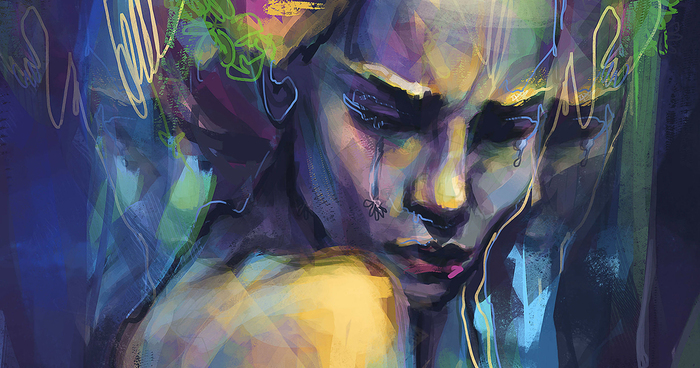
How does painting express emotions?
Painting can be a powerful means of self-expression for the artist, as well as a source of emotional resonance for the viewer. By manipulating colors, forms, and textures, painters can create a visual language that speaks directly to our emotions.
From the bright, bold colors of a sun-drenched landscape to the somber shades of a mournful portrait, painting has the ability to evoke a wide range of emotions in the viewer. Some artists even use painting as a form of therapy, channeling their innermost feelings onto the canvas. Whether abstract or representational, painting has the potential to touch our hearts and minds in profound ways.
Table of Contents
1. Colors
Color is one of the most obvious ways that painting can express emotions. Warm colors such as red, orange and yellow can express passion, energy and enthusiasm, while cool colors such as blue, green and purple can evoke sadness, calm and serenity. Colors can also be used to create emotional contrast, which is what the artist Andrea Marie Breiling does.
2. Shapes and textures
The composition of the painting can also help communicate emotions. Geometric shapes, lines and textures can be used to create tension, harmony or chaos, depending on the artist’s desired effect. Painters can also use space and perspective to create an illusion of space and depth that can have an emotional impact on the viewer.
3. Techniques
Artists can also express emotions through their painting technique. Smooth, precise brushstrokes can express control and stability, while broad, choppy brushstrokes can express confusion and turbulence. Artists can also use special techniques to create unique visual effects, such as scraping or dripping, which can add an emotional dimension to the painting.
4. Symbols
The subjects of the painting can also express emotions. Artists may depict scenes or figures that evoke a particular emotion, such as a melancholy landscape or an expressive portrait. Artists may also use symbols and allegories to communicate more abstract feelings, such as death, love or freedom.
5. Artist’s personal experiences
The emotions expressed in the painting may be related to the artist’s personal experience or to a particular historical or social event. Paintings may be created to express an immediate emotion, such as a tragic event or a moment of happiness, or to explore deeper emotions, such as nostalgia, pain or loneliness.
An example of an artist who expresses emotions in his painting is Vincent van Gogh. Van Gogh’s paintings are famous for their expressive use of color, dynamic composition and distinctive painting technique. Van Gogh suffered from mental disorders throughout his life, and his painting can be seen as an expression of his emotions.
In conclusion, painting is a very powerful means of expressing human emotions. Artists have used color, texture, composition, and other elements to create works of art that communicate their own worldview. Whether depicting moments of joy, sadness, anger, or any other emotion, painting can capture and convey emotions in a unique and unforgettable way.
Emotions are an essential part of our experience as human beings, and painting offers a way to explore and celebrate this dimension of our existence. Ultimately, painting allows us to see the world through the eyes of artists and to feel with them, offering us an aesthetic experience that is both personal and universal.








